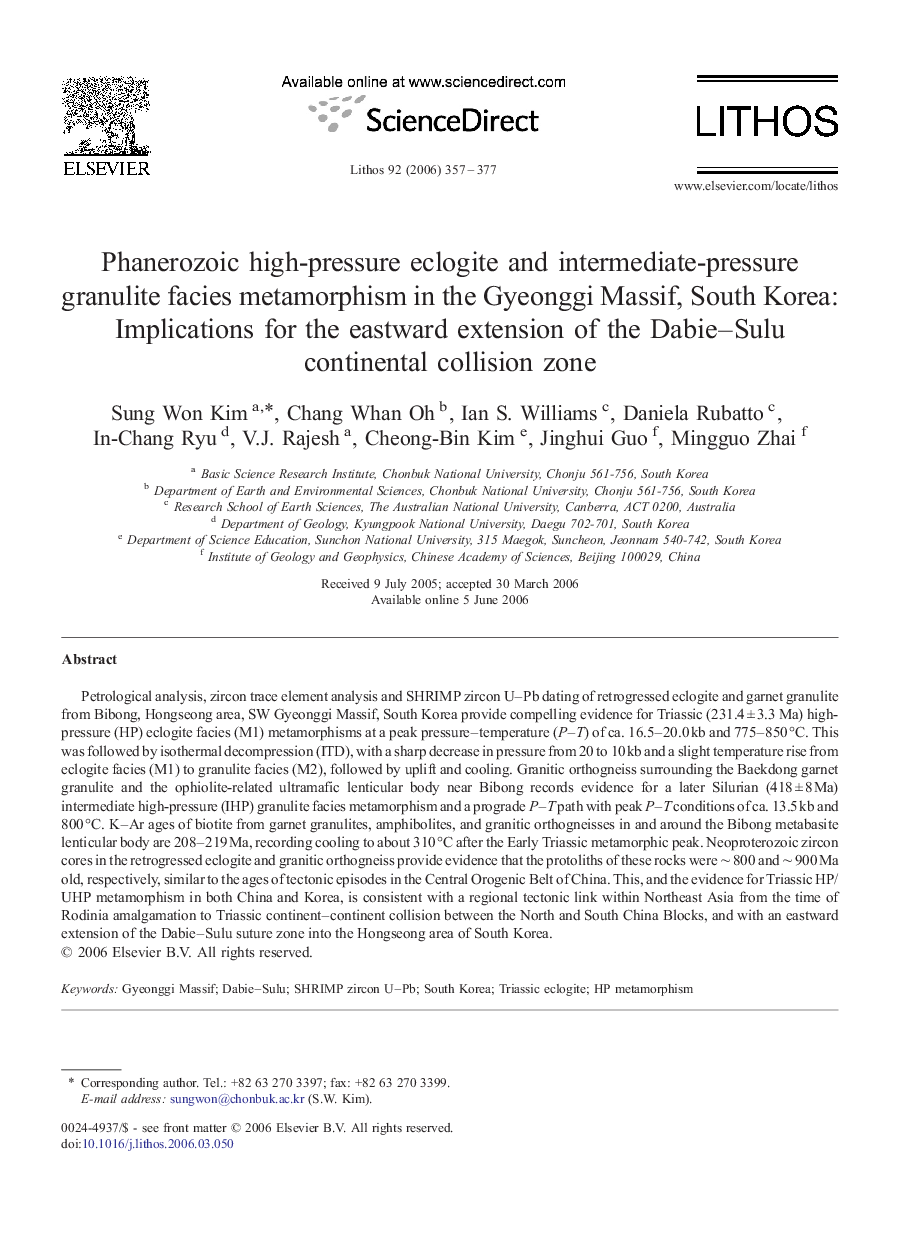| کد مقاله | کد نشریه | سال انتشار | مقاله انگلیسی | نسخه تمام متن |
|---|---|---|---|---|
| 4717884 | 1638774 | 2006 | 21 صفحه PDF | دانلود رایگان |

Petrological analysis, zircon trace element analysis and SHRIMP zircon U–Pb dating of retrogressed eclogite and garnet granulite from Bibong, Hongseong area, SW Gyeonggi Massif, South Korea provide compelling evidence for Triassic (231.4 ± 3.3 Ma) high-pressure (HP) eclogite facies (M1) metamorphisms at a peak pressure–temperature (P–T) of ca. 16.5–20.0 kb and 775–850 °C. This was followed by isothermal decompression (ITD), with a sharp decrease in pressure from 20 to 10 kb and a slight temperature rise from eclogite facies (M1) to granulite facies (M2), followed by uplift and cooling. Granitic orthogneiss surrounding the Baekdong garnet granulite and the ophiolite-related ultramafic lenticular body near Bibong records evidence for a later Silurian (418 ± 8 Ma) intermediate high-pressure (IHP) granulite facies metamorphism and a prograde P–T path with peak P–T conditions of ca. 13.5 kb and 800 °C. K–Ar ages of biotite from garnet granulites, amphibolites, and granitic orthogneisses in and around the Bibong metabasite lenticular body are 208–219 Ma, recording cooling to about 310 °C after the Early Triassic metamorphic peak. Neoproterozoic zircon cores in the retrogressed eclogite and granitic orthogneiss provide evidence that the protoliths of these rocks were ∼ 800 and ∼ 900 Ma old, respectively, similar to the ages of tectonic episodes in the Central Orogenic Belt of China. This, and the evidence for Triassic HP/UHP metamorphism in both China and Korea, is consistent with a regional tectonic link within Northeast Asia from the time of Rodinia amalgamation to Triassic continent–continent collision between the North and South China Blocks, and with an eastward extension of the Dabie–Sulu suture zone into the Hongseong area of South Korea.
Journal: Lithos - Volume 92, Issues 3–4, December 2006, Pages 357–377